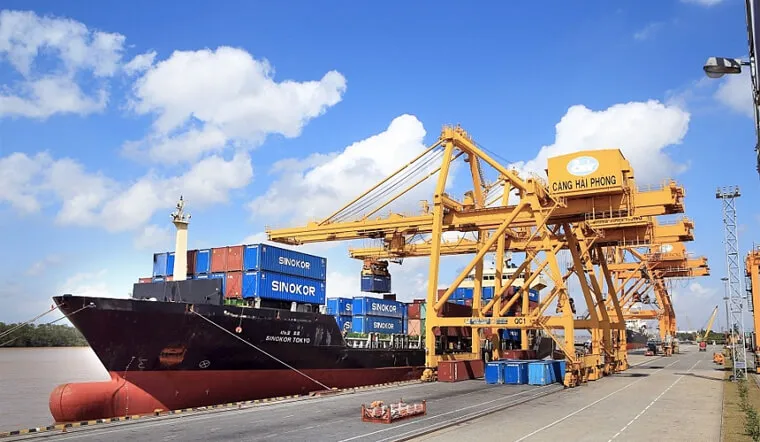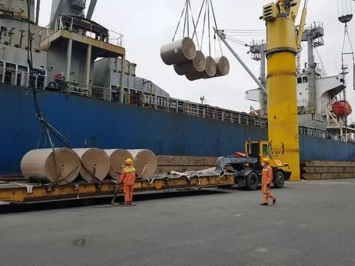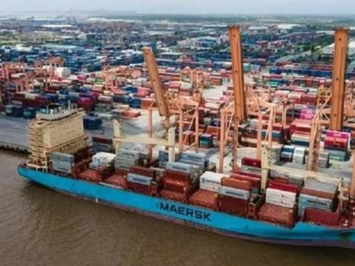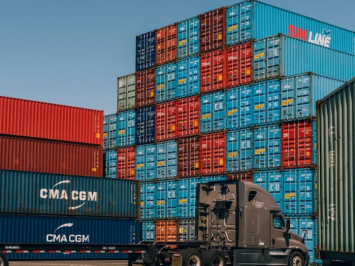(PLO) – A trade surplus of USD 10.18 billion, along with strong import-export performance and foreign investment attraction, are the bright spots in Vietnam’s growth picture over the past seven months.
According to a report from the General Statistics Office (Ministry of Finance), industrial production in July continued to maintain its growth momentum. The Industrial Production Index (IPI) for July is estimated to increase by 0.5% compared to the previous month and 8.5% over the same period last year.
For the first seven months of the year, the IPI rose by 8.6% year-over-year.
Several key industrial products recorded growth, including automobiles, televisions, NPK compound fertilizer, casual wear, cement, leather shoes and sandals, aquafeed, rolled steel, and liquefied petroleum gas (LPG), which grew by 11.4%.
In addition, import-export activities saw strong growth. In July, total import and export turnover reached USD 82.27 billion, up 8% from the previous month and 16.8% over the same period last year.
Cumulatively for the first seven months, the total import-export turnover hit USD 514.7 billion, an increase of 16.3% year-over-year. Of this, exports rose by 14.8% and imports increased by 17.9%, resulting in a trade surplus of USD 10.18 billion.
Specifically, export turnover in July reached USD 42.27 billion, up 6.9% from the previous month. In total for the first seven months, export turnover amounted to USD 262.44 billion, a 14.8% increase year-over-year.
Notably, 28 export items surpassed the USD 1 billion mark, accounting for 91.7% of total exports. Among them, 9 items exceeded USD 5 billion, making up 72.3% of the total.
In terms of export structure, processed industrial goods brought in USD 232.37 billion; agricultural and forestry products USD 22.4 billion; seafood USD 6.08 billion; and fuels and minerals USD 1.59 billion.
Regarding imports, July’s import turnover was USD 40 billion, up 9.1% from the previous month. For the first seven months, total imports reached USD 252.26 billion, up 17.9% year-over-year.
The United States remained Vietnam’s largest export market with a turnover of USD 85.1 billion, while China was the largest import market, with a turnover of USD 101.5 billion.
 Import-export and foreign investment attraction are the bright spots in the economic growth
Import-export and foreign investment attraction are the bright spots in the economic growth
In terms of foreign direct investment (FDI), total registered capital into Vietnam as of July 31 — including newly registered capital, adjusted capital, and capital contributions or share purchases by foreign investors — reached USD 24.09 billion, up 27.3% year-over-year.
Notably, FDI disbursement in the first seven months of 2025 was estimated at USD 13.6 billion, an 8.4% increase compared to the same period last year. This is the highest seven-month disbursement amount in the past five years.
According to Dr. Nguyễn Thị Hương, Director General of the General Statistics Office, import-export and FDI attraction are the key highlights of Vietnam’s economic performance in the first seven months of 2025.
These results reflect the effective utilization of free trade agreements (FTAs) and the expansion of Vietnam’s export markets. They also demonstrate increasing confidence from foreign investors in Vietnam’s economic development.
However, in addition to favorable factors promoting economic development, Vietnam’s economy still faces various risks and challenges, such as geopolitical tensions, globally high interest rates, inflationary pressures if oil and raw material prices rise, exchange rate pressure, potential non-performing loans if credit growth tightens, and limited public investment absorption capacity in some localities.
Director General Hương emphasized that, to maintain the growth momentum in the remaining months of the year, all levels and sectors must be more flexible and resolute in policy implementation, improve the investment and business environment, and enhance the economy’s resilience — to achieve the 2025 growth target of 8.3–8.5%.









![Detailed Guide to Chemical Import Procedures [Updated 2025]](https://songwinlog.net/thumbs/355x266x1/upload/news/ve-tay-hinh-tron-logo-2-3776.png)











